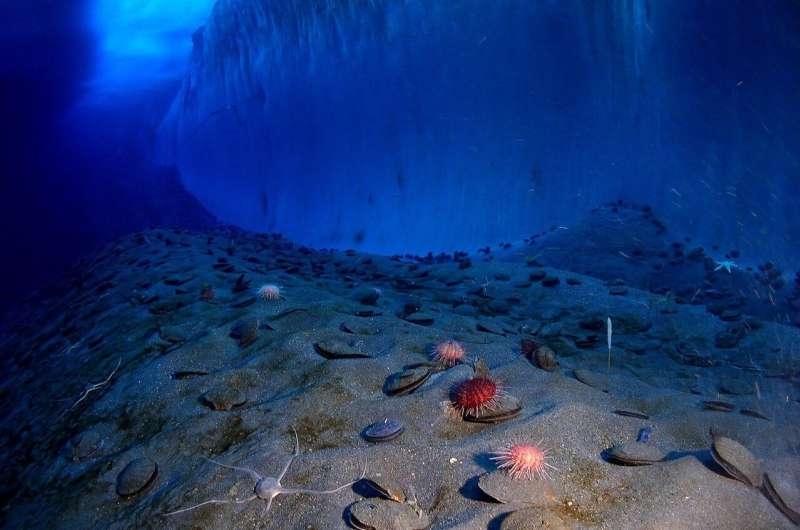This article has been reviewed according to Science X's editorial process and policies. Editors have highlighted the following attributes while ensuring the content's credibility:
fact-checked
peer-reviewed publication
proofread
Scientists sequence full genome of sea cucumber inhabiting hydrothermal vent

Hydrothermal vents are an unlikely environment for animals to flourish, characterized by rapid changes in temperature and a challenging chemistry: acidic pH, rich in sulfur and methane. Not to mention the high hydrostatic pressure and the darkness of the deep sea.
A team of scientists at the Sanya Institute of Deep-sea Science and Engineering (China) have now sequenced the full genome of a particularly unusual inhabitant of the hydrothermal vent environment: the sea cucumber Chiridota heheva. The research has been accepted for publication in the journal GigaScience.
Organisms found at hydrothermal vents are among the most unique life forms on the planet, as they evolved special adaptations to survive and procreate under these harsh conditions. For example, many microbes employ special metabolic functions to deal with the abundance of sulfur and iron, and to withstand the enormous heat near the vent.
In addition to microbes, there are even multicellular and higher order organisms that have adapted to the hydrothermal vent conditions, including various species of worms, snails, crabs and shrimp.
In 2019, a Chinese deep sea expedition with the manned research submarine "Shenhaiyongshi" collected a specimen of the sea cucumber C. hehevae at the bottom of the Indian Ocean, at the Kairei vent field at a depth of 2,428 meters. The water around the Kairei vent is particularly enriched in dissolved iron, adding to the harsh conditions of high hydrostatic pressure, darkness and fluctuating temperatures.
Sea cucumbers are echinoderms, and as such related to sea urchins and sea stars— a group of animals with highly unusual body plans. They are found on sea floors all over the world, where they devour detritus and use their tentacle to explore the sediment. While other high-quality genomes of sea cucumbers are available, the work to be presented in GigaScience is the first genome of a sea cucumber specimen collected at a hydrothermal vent.
Initial comparative genome analyses indicate that several gene families are expanded in this sea cucumber, meaning that the species has a higher repertoire of specific sets of genes than related species.
These expanded and unique genes are involved in DNA repair and iron metabolism, among other processes—a first indication that the adaptations to the harsh, iron-rich environment are reflected in the species' genome. The genomic data will provide a valuable resource for further studies on both, sea cucumbers and the unique vent fauna.
More information: Haibin Zhang et al, A high-quality chromosomal genome assembly of the sea cucumber Chiridota heheva and its hydrothermal adaptation, GigaScience (2023). DOI: 10.1093/gigascience/giad107
Journal information: GigaScience
Provided by GigaScience





















